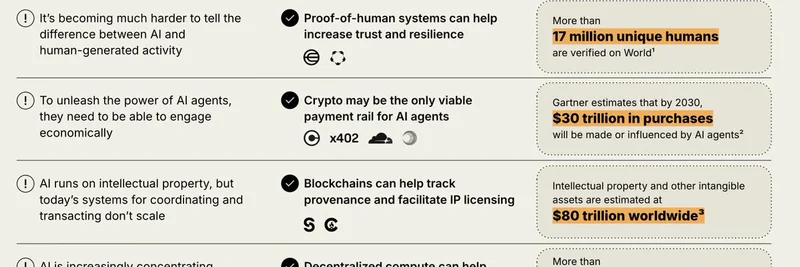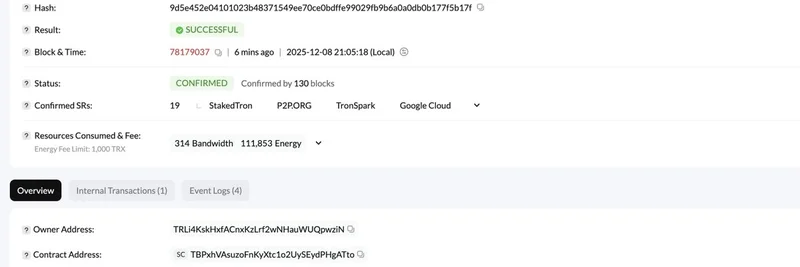Ever feel like AI and crypto are two puzzle pieces from different boxes, but somehow they're starting to fit together perfectly? That's the vibe from a recent X post by a16z crypto, the venture arm that's been betting big on blockchain since the early days. They dropped this gem: "AI and crypto aren’t competing—they’re converging." And right on cue, Edgar Pavlovsky, founder of Dark Research and MTN DAO, chimed in with agreement, linking to his own deep dive on why this mashup is the future.
If you're knee-deep in meme tokens like the rest of us at Meme Insider, this isn't just tech talk—it's a roadmap for how playful, viral assets like Dogecoin or PEPE could turbocharge the next wave of blockchain adoption. Let's break it down, no PhD required.
The a16z Take: Crypto as AI's Secret Weapon
a16z's insight hits hard because it flips the script. AI is exploding—think ChatGPT whipping up essays or Midjourney dreaming up art—but it's bumping into real-world walls. How do we trust outputs that blur the line between human and machine? How do AI agents (autonomous bots that act on your behalf, like a digital sidekick handling trades) actually spend money without a bank account? And with intellectual property (IP) getting gobbled up by a few tech giants, who's tracking ownership in this wild west?
Enter crypto. Blockchains aren't just for HODLing Bitcoin; they're tamper-proof ledgers that can verify "proof-of-human" activity (ensuring that tweet or review came from a real person, not a bot farm). They provide seamless payment rails for AI agents via standards like X402, letting bots buy cloud compute or data without clunky credit cards. Plus, smart contracts can automate IP licensing, turning that $80 trillion global intangible asset market into a frictionless flow. And decentralized compute networks? They're already training over 420,000 AI models on platforms like Gensyn, keeping things open and permissionless.
Check out this slick infographic from a16z that lays it all out:
It's a reminder: By 2030, Gartner predicts AI agents will influence $10 trillion in purchases. Crypto isn't optional—it's the infrastructure upgrade AI desperately needs.
Edgar's Why: UX is the Missing Link (and Memes Get It Right)
Pavlovsky's blog post echoes this but zooms in on the human side—or rather, the lack of it. Both AI and crypto have nailed the backend: Solana's blazing-fast transactions (thousands per second at pennies a pop) and LLMs (large language models, the brains behind tools like Grok) that can reason like pros. But adoption? Stagnant. Why? Crappy user experience. These industries geek out on code and protocols, sidelining design that makes tech feel intuitive, like scrolling TikTok.
Drawing from his Solana days building marginfi (a DeFi lending platform that's all about fair, efficient finance), Edgar argues the sweet spot is the crypto-AI crossroads. Imagine an app where AI scouts deals for you, crypto handles the payments, and the interface is as addictive as a meme coin launch. His team's "Scout" prototype does just that: A consumer finance tool blending AI smarts with blockchain rails, all wrapped in sleek UX.
But here's where memes enter the chat. Meme tokens thrive on virality and community—think how $WIF on Solana exploded via absurd dog-in-a-hat lore, onboarding normies who wouldn't touch a whitepaper. That cultural magic? It's the UX hack crypto needs. As Edgar notes, in a post-scarcity world (where AI floods us with abundance), entertainment drives demand. Memes are entertainment distilled: Quick, shareable, and human-centric. Pair them with AI agents that meme-ify onboarding (e.g., a bot that generates custom Pepe NFTs as rewards), and suddenly, the "next billion users" aren't just possible—they're inevitable.
Why This Matters for Meme Token Holders and Builders
For us in the meme trenches, this convergence is bullish AF. Meme ecosystems on chains like Solana or Base aren't just jokes; they're testing grounds for decentralized social finance. Tools like Dark Research's "Internet Capital Markets" (ICM)—where token creators snag trading fees via livestreams—could evolve with AI to predict viral hits or automate fair launches. No more rug pulls if smart contracts and provenance tracking are baked in.
Predictions? Expect meme-AI hybrids: Tokens funding open-source AI models, or agents launching micro-memes based on real-time trends. It's not vaporware; it's the dent in the universe Edgar's chasing—global access to safe finance and intelligent tools, powered by what starts as a laugh.
If you're building or trading memes, keep an eye on this space. The convergence isn't coming—it's here. What's your take? Drop it in the comments, and let's meme this future into existence.
Follow Meme Insider for the latest on meme tokens, blockchain tech, and the wild world of crypto-AI.



